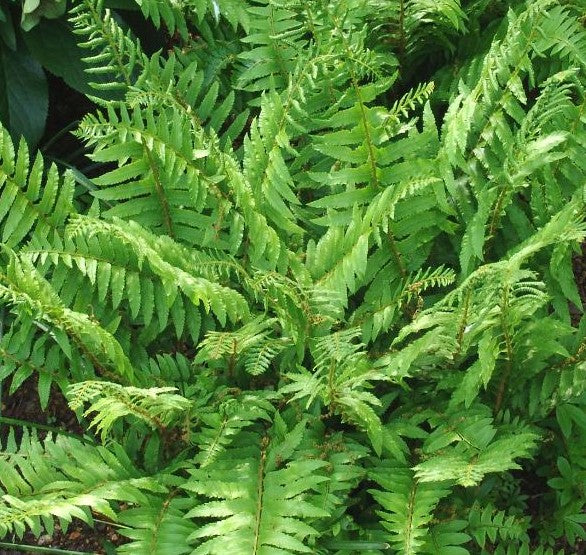1
/
of
1
POLYSTICHUM ACROSTICHOIDES / CHRISTMAS FERN
- Regular price
-
$23.95 CAD - Regular price
-
- Sale price
-
$23.95 CAD
Shipping calculated at checkout.
Couldn't load pickup availability
Delivery Fees
Delivery Policy
Enjoy FREE delivery on all orders over $149!
For orders between $80 and $149, a $18.99 delivery fee will apply.
Orders under $80 will be prompted to add more items to your cart.
- Appearance: Christmas fern typically grows to a height of 1 to 2 feet (30 to 60 centimeters). Its fronds are pinnate, meaning they are divided into leaflets along a central stem. The fronds are dark green and have a distinctive shape, with the leaflets arranged in a fan-like or Christmas stocking pattern. They are leathery in texture.
- Evergreen Nature: One of the most notable features of Christmas fern is its evergreen nature. Unlike many other ferns that die back in the winter, Christmas fern retains its green fronds year-round, even during the holiday season, which led to its common name.
- Habitat: Polystichum acrostichoides is commonly found in a variety of woodland habitats, including moist, shaded forests, slopes, and stream banks. It prefers well-drained, acidic soils and can tolerate a range of light conditions, from partial shade to full shade.
- Rhizomatous Growth: Like many ferns, Christmas fern spreads through rhizomatous growth. It forms a clump of fronds that emerge from a rhizome, and over time, it can slowly expand its colony by sending out new rhizomes.
Wildlife Value: Christmas fern provides habitat and cover for various wildlife, including insects and small mammals. While it is not a preferred food source for most animals, it contributes to the overall biodiversity of woodland ecosystems.
- SPREAD 30-45 CM
- HEIGHT 45-60 CM
- PLANT ZONE 4
- NATIVE TO ONTARIO
Care Instructions
Different plants have different watering needs. Check the soil moisture by inserting your finger about an inch into the soil. If it feels dry, water the plant until the water drains from the bottom of the pot. Avoid overwatering, as it can lead to root rot.


POLYSTICHUM ACROSTICHOIDES / CHRISTMAS FERN
- Regular price
-
$23.95 CAD - Regular price
-
- Sale price
-
$23.95 CAD
SALE
All Echinacea & Monarda, Buy 4 get 1 Free! No code required


